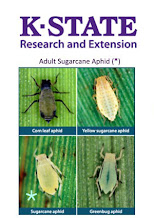Christmas Poinsettia Care
 By Sandra Wick
By Sandra WickPoinsettias are traditional Christmas flowering plants that will last throughout the Christmas season. With the introduction of long-lasting cultivars, the popularity of the poinsettia has increased significantly. In Mexico, the poinsettia is a perennial shrub that will grow 10-15 feet tall. The showy colored parts of poinsettias that most people think of as the flowers are actually colored bracts (modified leaves).
Just how do I take care of my Christmas Poinsettia?
To help the beautiful poinsettia plant to keep healthy and looking great for your holiday decorations, there are a few guidelines to follow.
Be sure the plant is well wrapped when you take it outside on your trip home because exposure to low temperatures for even a short time can injure leaves and bracts. Unwrap the plant as soon as possible because the petioles (stems of the leaves and bracts) can droop and twist if the plant is left wrapped for too long.
For maximum plant life, place your poinsettia near a sunny window or other well-lighted areas. Do not let any part of the plant touch cold window panes. Poinsettias are tropical plants and are usually grown at temperatures between 60 and 70 degrees F. in greenhouses, so this temperature range, in the home, is best for long plant life. High temperatures will shorten the life of the bracts. Poinsettias do not tolerate warm or cold drafts so keep them away from radiators, air registers, and fans as well as open windows or doors. Place your poinsettia in a cooler room at night (55 to 60 degrees F is ideal) to extend the blooming time.
Examine the soil daily and water only when it feels dry by placing your finger about an inch deep in the potting soil. If it’s dry at that depth, use lukewarm water to replace the soil moisture. Stop applying when water begins to run out of the pot’s drainage hole(s). Discard the drainage water. Poinsettias do not like to have “wet feet”. If you don't water enough, the plant will wilt and the lower leaves will drop. If you water too much the lower leaves will yellow and then drop. If you keep your plant for several months, apply a soluble houseplant fertilizer, once or twice a month. However, do not fertilize when the poinsettia is in bloom (the center part of the plant).
Poinsettias can be re-flowered the following Christmas, but unless a yearlong schedule of care is observed, the results usually are not good. For such a schedule, continue normal watering of the soil until the first of April, and then allow it to dry gradually. Do not let it get so dry at any time that the stems shrivel. Following the drying period, store the plant in a cool (60 degrees F), airy location on its side or upright. If you want the complete re-blooming care schedule after April, simply contact any Post Rock Extension District Office.
There are more than 100 varieties of poinsettia, and the ones available change often as improved and novelty varieties are introduced.
So are Poinsettias poisonous?
Despite rumors to the contrary, Poinsettias are not poisonous. A study at Ohio State University showed that a 50-pound child would have to eat more than a pound-and-a-quarter of Poinsettia leaves (500 to 600 leaves) to have any side effects. The most common side effects that have been reported from poinsettia ingestion are upset stomach and vomiting. The leaves are reportedly not very tasty, so it's highly unlikely that kids or even pets would be able to eat that many! But be aware that the leaves can still be a choking hazard for children and pets.
K-State Research and Extension has a publication, “Home Care of Poinsettias” available in your local Extension Office or online at: www.ksre.ksu.edu that can provide you with additional information.
Sandra Wick is an Agriculture Natural Resources Extension Agent for the Post Rock District in north central Kansas.









